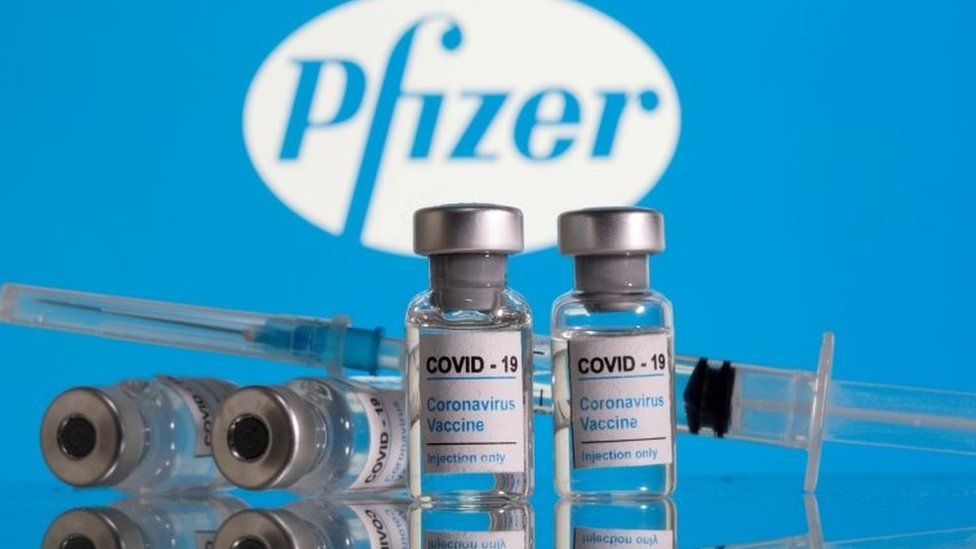
Pfizer (PFE) is approaching COVD-19 with a complete end-to-end solution intent on capturing the lion’s share of the market. It’s no secret that viruses mutate. For the past 90 years, mankind has been using a vaccine to battle the most famous virus of them all called influenza. Vaccines have been able to eliminate polio, tetanus, rubella, but not the flu. Even with decades of vaccinations, the flu season still results in over 200,000 hospitalizations each year and is still considered a major public health threat.
COVID-19 could turn out to be a similar animal. Pfizer has a very successful COVID-19 vaccine that is expected to deliver 220 million doses by the end of May and on CNBC the CEO of Pfizer made a bold call to have their oral broad-spectrum viral inhibitor by the end of the year. The only thing standing in PFE’s way is a small $22 million market cap biotech called Todos Medical (TOMDF) who happens to be ahead of them in clinical trial development race and is going after exactly the same target called 3CL protease.
Pfizer’s new oral antiviral is expected to be very much like Roche’s (RHHBY) Tamiflu, which is an antiviral for influenza and was a blockbuster product about a decade ago. Tamilflu sold over three billion USD of product during the 2009 H1N1 swine flu outbreak. As many expected, the COVID-19 viruses are now mutating and some strains are working their way around vaccines while also becoming more contagious. The world cannot get by on vaccines alone and will need an easy-to-take antiviral. Todos Medical (TOMDF) is currently a phase 2 study while Pfizer is finishing up their phase 1.
TOMDF could beat PFE to the punchline, and if they do, its a multibillion dollar lottery ticket for TOMDF shareholders with only 3 names in the drawing if you you think Merck (MRK) has a chance with molnupiravir.
Investors are bound to reap the rewards from the company that quickly finds the best solution. PFE or TOMDF’s 3CL protease inhibitor is a viable solution to be COVID-19’s Tamiflu, or the Tamiflu for coronaviruses in general. The real question is whether or not they can get it approved in time before the variants decrease the effectiveness of the vaccines.
Decades of Vaccine Failures
Some of the worst epidemics over the past two decades were coronaviruses, including the 2002-2004 outbreak of SARS-CoV (severe acute respiratory syndrome), 2012 MERS-CoV (middle east respiratory syndrome), and then in 2019-2020, SARS-CoV-2, commonly referred to as COVID-19. Unfortunately, these viruses have been historically difficult to develop vaccines for, due to viral escape mechanisms and the safety concerns that surround all new vaccines. While this COVID-19 pandemic was handled much differently than outbreaks in the past, the historical vaccine development for viruses was completed only after the epidemics subsided, or vaccines failed to be developed successfully at all. Even with COVID-19, viral variants are likely to arise, gradually escaping immunity of the Pfizer (PFE), Moderna (MRNA), and J&J (JNJ) vaccines.
There are a number of viruses that still, after years of R&D, have no vaccine available on the market. HIV treatments have been a mainstay for which Gilead Sciences (GILD), Merck (MRK), J&J, Bristol Myers Squibb (BMY), AbbVie (ABBV), and GlaxoSmithKline (GSK) have brought in massive amounts of recurring revenues (>$30 billion worldwide) for years, using antivirals. Another example of a viral disease with no available vaccines is RSV (Respiratory Syncytial Virus), which is basically the common cold for most people, but it can easily kill infants and older adults.
The bottom line is that vaccines are a difficult way to combat some viruses such as coronaviruses, and big pharma needs something else in its toolbox to treat coronaviruses because of this.
Vaccine Trouble, Just Like Influenza
Loss of Potency
There are two primary reasons vaccines aren’t the magic bullet against COVID-19 and other coronaviruses. The first is obvious—vaccines against highly mutant viruses such as SARS-CoV-2 will have to be administered with booster shots as the viruses try to escape the population’s immunity, and because of that, the vaccine game is always behind the next mutant virus.





